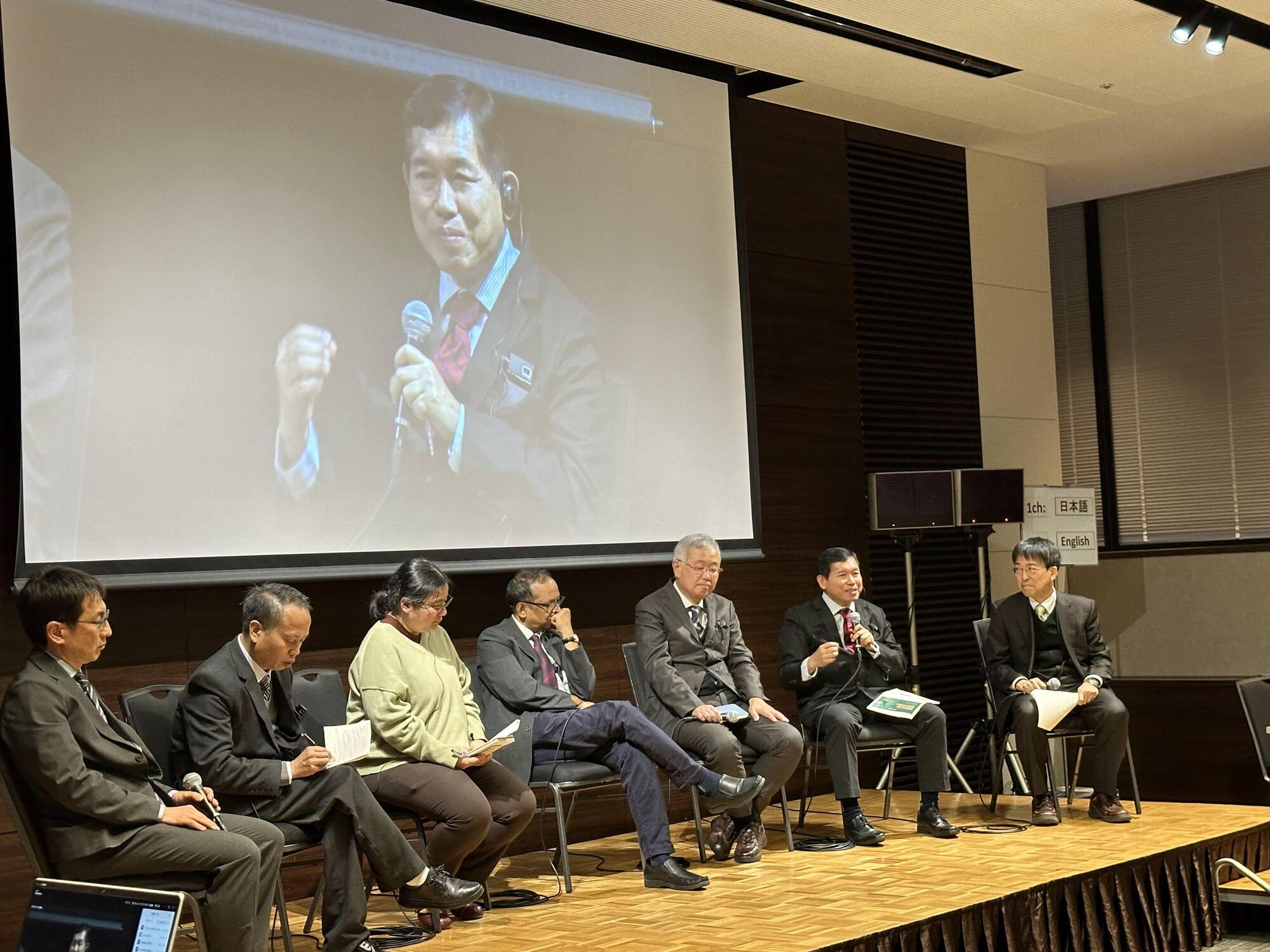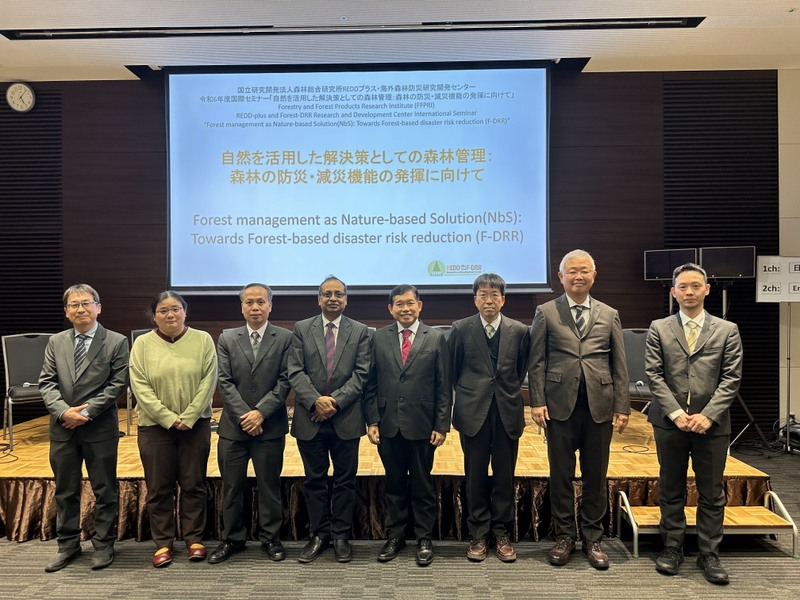Forests as nature-based solutions for disaster risk reduction highlighted at international seminar
06 February 2025, Yokohama

Speakers at the FFPRI's international seminar on forest management as nature-based solution, 06 February 2025. Photo: FFPRI
Japan, a country frequently affected by heavy rains from typhoons and seasonal downpours, has long faced the challenge of disasters. To address this, Japan has developed and implemented Forest-based Disaster Risk Reduction (F-DRR) techniques that harness the natural functions of forests and trees to mitigate disaster risks. As global interest in nature-based solutions (NbS) continues to grow, F-DRR is increasingly recognized as an effective and cost-efficient climate adaptation measure, particularly for upstream river basin management in developing countries.
International seminar showcases forest-based solutions
The recent international seminar, Forest Management as Nature-Based Solution: Towards Forest-based Disaster Risk Reduction, organized by Japan’s Forestry and Forest Products Research Institute (FFPRI) in Tokyo on 6 February 2025, brought together experts to discuss the critical role of forests in disaster risk reduction and regional development. The event aligned with global efforts to mainstream NbS and promote sustainable solutions for mitigating the adverse effects of natural disasters such as landslides, floods, storm surges, and typhoons.
Sustainable forest management as a key NbS
The International Tropical Timber Organization (ITTO) participated in the seminar, emphasizing the importance of sustainable forest management (SFM) as a cost-effective NbS for disaster risk reduction. Participants noted that greater efforts are needed to promote awareness and understanding of NbS and the multiple benefits that SFM provides.
Knowledge exchange and best practices
The seminar facilitated the exchange of knowledge and best practices in sustainable forest management that mitigate disaster risks. Notable examples showcased included:
- Community forestry and reforestation in the Philippines to increase resilience and economic benefits.
- Mangrove restoration in Viet Nam, demonstrating how coastal ecosystems can be protected while leveraging payment for ecosystem services to promote community forestry.
- Mountain slope and erosion control technologies applied in Japan and other developing countries, highlighting the effectiveness of forest-based interventions in reducing landslide risks.

Raising awareness and expanding research
A panel discussion provided valuable insights into the use of mangrove forests as a risk reduction tool in the tropics and the need for broader awareness of SFM as a nature-based solution. Additionally, two publications by FFPRI (in Japanese) showcasing forest-based disaster risk reduction strategies were released during the seminar, contributing to the growing body of research in this field.
ITTO Executive Director Sheam Satkuru emphasizes that “it is only through awareness raising that the appreciation of the contributions of SFM in the tropics will grow - not only does SFM enhance environmental resilience but also contributes to climate change mitigation and adaptation and the sustainable livelihoods and development of rural communities”.
For more details, visit this link.